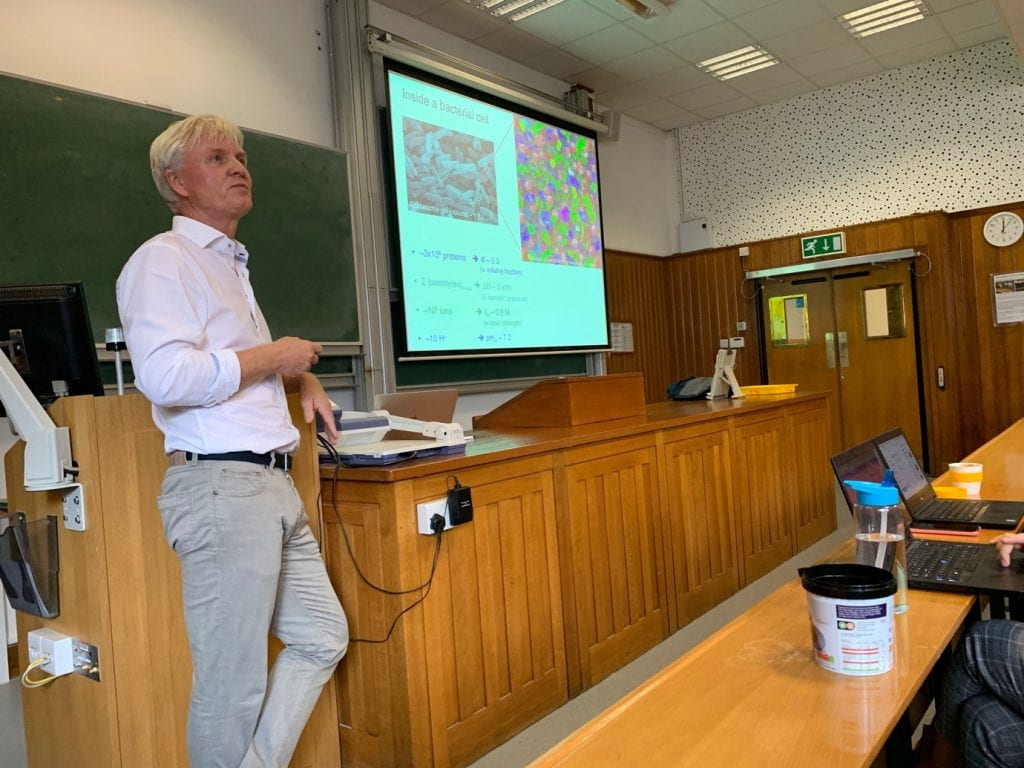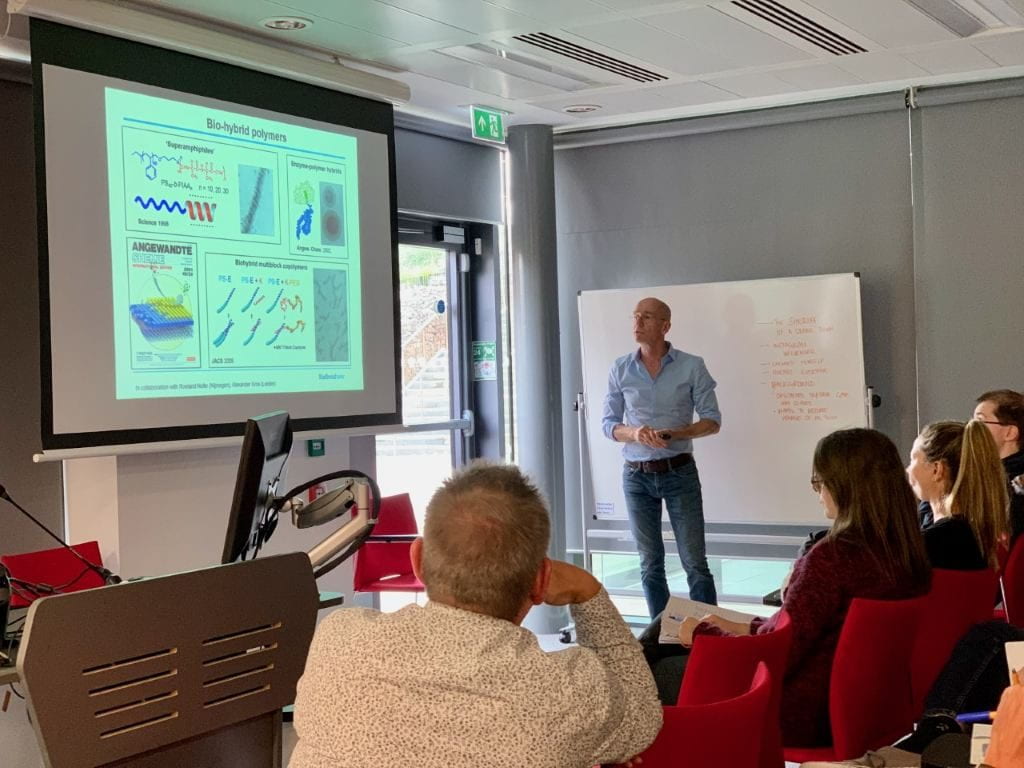Hosted by Dr Thomas Gorochowski and PhD students Veronica Greco and Matthew Tarnowski from the Biocompute Lab.
Dr Bert Poolman, a biochemist from the University of Groningen, visited Bristol on the 4th September to pose the question of whether it is possible to artificially create and control the physicochemistry of a cell. The ability to manipulate, control, or even create a new cell from scratch are fundamental directions for synthetic biology research.
What if we could build a cell in the lab?
Bert Poolman is part of an EU-wide project – aptly named BaSyC, or, ‘Building a Synthetic Cell’, which emerged in September 2017 combining leaders in physics, chemistry and biology from across the Netherlands to test out this theory.
“In the next decade they aim to achieve a physicochemical homeostatis in a cell where metabolic pathways and energy consumption/production systems can be better understood, optimised and synthetically built.” Veronica Greco explains. She was in the audience during his seminar.
Matthew Tarnowski, who also attended the seminar, said that Bert “highlighted some fascinating properties of cells: they are incredibly crowded, yet molecules move surprisingly fast within them.” Matthew was struck by Bert’s results demonstrating the sheer complexity of cells. “He [Bert] showed that engineering systems that mimic fundamental cellular processes is challenging”.

What was the audience reaction?
Intrigued audience members questioned the sustainability of such an ambitious project, such as how to overcome the challenge of building a synthetic ribosome and the new methods required to carefully assemble the numerous parts of a synthetic cell in a controllable way.
“The talk left me curious about how minimal life research could be completed responsibly: have the economic, social and environmental impacts been anticipated?” Matthew pointed out that the purpose behind building minimal forms of life went unanswered.
Veronica ended by noting that, “Overall, it is a very well thought out project that will require lots of different expertise and time, and surely it has all the credentials to give a big contribution to science and to change once again how the growing scientific field of synthetic biology is perceived.”
Are you a PhD or Postdoc?
BaSyC are offering various work packages to PhDs and Postdocs within one of their partner institutions. Due to the interdisciplinary nature of the work (combining physicists, chemists and biologists), “working at different locations and labs is more the rule than the exception”. There are opportunities to be involved in BaSyC activities: progress meetings and trainings, summer schools and the biennial international symposium on Building a Synthetic Cell.
Interested in joining the project?
Visit the BaSyC website for more information.
No jobs available for the specific part of the programme you are interested in? Feel free to send an open application to the corresponding PI directly – the PI’s contact details can be found at their people page.
For general questions and queries: info@basyc.nl




